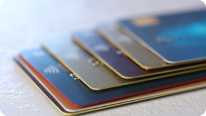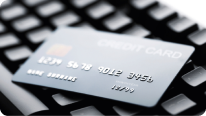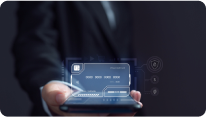
Debit Cards
Debit cards are linked directly to your savings account. When you use them, the money is instantly deducted from your account. This makes it easy to track your spending and helps you stick to your budget. Debit cards are great for everyday purchases and offer the benefit of no-fee cash withdrawals within certain limits.

Credit Cards
Credit cards allow you to borrow money up to a predetermined credit limit. You don’t need the money in your account to make a purchase, but the balance is paid off later. Credit cards are useful for building a credit history and often come with perks like shopping rewards, travel benefits, and more. However, they also carry interest if the balance isn’t paid in full.

Gift Cards
Gift cards are prepaid cards that can be loaded with money and given as gifts. They offer the recipient the freedom to choose their preferred items, making them a thoughtful alternative to cash. You can find open-loop gift cards (which work at any store) and closed-loop gift cards (which are restricted to specific platforms, like Amazon or Starbucks).

Forex Cards
Forex cards are designed for international travel. These cards allow you to preload them with foreign currency and use them to make payments in the local currency of your destination. They lock in exchange rates and reduce transaction fees.

Meal Cards
Meal cards are used to pay for meals and dining expenses. They are commonly provided by employers and offer tax benefits to employees.

Virtual Cards
Virtual cards are temporary, digitally generated cards that you can use for online purchases. They provide extra security by not revealing your actual card details, which reduces the risk of online fraud.

Secured vs. Unsecured Credit Cards
Secured credit cards require a security deposit that acts as collateral, making them a good choice for individuals with limited or poor credit histories. Unsecured credit cards, on the other hand, don’t require a deposit and are offered based on your creditworthiness. Both types of credit cards can be useful for building credit, but they serve different financial situations.
Key Credit Card Terms

Annual fee
The yearly charge by card issuers for the card’s services, which can sometimes be waived for the first year or for lifetime use.

Credit limit
The maximum amount you can borrow on your credit card, determined by factors like income, credit score, and repayment history.

Annual percentage rate (APR)
The yearly interest rate charged on unpaid balances, which is divided by 12 to calculate monthly interest on dues.

Credit score
A three-digit number (ranging from 300 to 900) that reflects your creditworthiness, with a score above 750 typically making it easier to get a card and higher limits.

Billing cycle
The time period between your card's statement dates, usually 30 days, during which transactions and payments are tracked.

Due date
The fixed date by which you must pay your credit card balance to avoid penalties and interest charges.

Minimum Amount Due
The smallest amount you must pay each month to keep your account in good standing, usually a percentage of the total balance.

Rewards
Loyalty points earned through spending, which can be redeemed for discounts, merchandise, or to offset your balance.

Cash advance
The option to withdraw cash from your credit card, often subject to high-interest rates but sometimes with an interest-free period.

Balance transfer
The process of transferring debt from one card to another with a lower APR to save on interest.
1
Smart Credit Card Usage
Using a credit card wisely is crucial for maintaining financial health.
- Always pay your bills on time to avoid penalties and damage to your credit score.
- Use the rewards wisely—many cards offer cashback, travel points, or other perks.
- Be mindful of your spending and keep track of your transactions to prevent overspending or unauthorized charges.
2
Card Safety Tips
You can use you bank card safely by:
- Protect your sensitive card details like your PIN and CVV.
- Use secure payment methods and avoid public Wi-Fi for transactions.
- Regularly check your statements for errors or fraud.

